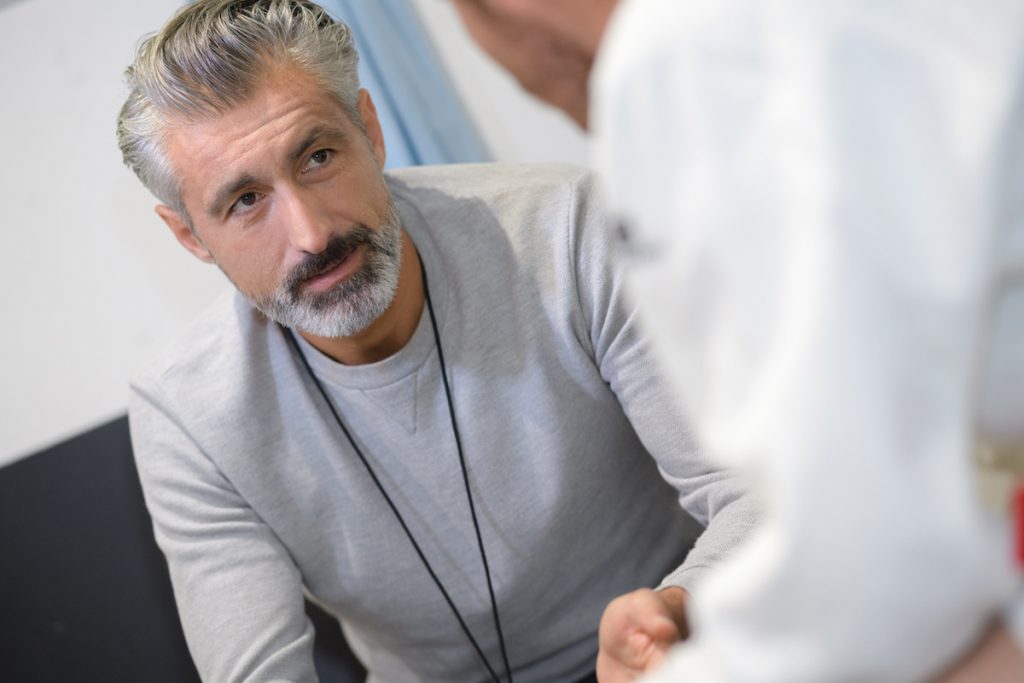This is the fourth topic related to Latino Culture & Healthcare. In this case doña Sandra and I were talking about allowing enough time and space for your Latino patients to build a positive rapport with you…
Some of the questions that doña Sandra addressed in this conversation are:
-
How important is it to give some time and space to listen the patient?
-
How can I request for more information without being rude?
Here is our conversation with subtitles in Spanish (no English in this one). This is a great medical Spanish listening comprehension activity!
Subscribe to our YouTube Channel to see all of our lessons and get the latest videos right away!
Some of Sandra’s insights into Latino culture are:
- It’s important to use phrases that help your patient build trust in you from the beginning. For example:
- Monosyllabic phrases like “Yes”, “No”, or just writing the patient’s answers on paper without making eye contact could make them feel uncomfortable and shy.
- Offering a conversation instead of just asking questions will contribute to a better understanding of the patient’s health condition.
Doña Sandra explains why it’s important to have some introductory general conversation with your patient before getting down to business:
She says having a conversation with your patient, offering something more than a question-and-answer interaction, makes them feel they’re not only a clinical history and this is valuable because they are not just a number but a human being and you are truly interested in him or her.
Some Useful Phrases / Algunas frases útiles
- Me interesa usted como persona
 (I am interested in you as a person)
(I am interested in you as a person) - Quiero escucharlo para saber cómo puedo ayudarlo
 (I want to listen to you to know how I can help you)
(I want to listen to you to know how I can help you) - Cuénteme…
 (Tell me…)
(Tell me…) - Cómo ha estado, cómo está, cómo se siente
 (How have you been, how are you, how are you feeling?)
(How have you been, how are you, how are you feeling?) - ¿Dónde le duele?
 (Where does it hurt?)
(Where does it hurt?) - ¿Puede pasar a la camilla, por favor?
 (Could you go to the stretcher please?)
(Could you go to the stretcher please?)
Doña Sandra also suggests that your body language is important to keep in mind as well. Anything you can do to avoid giving your patient the idea you are in a rush and just want to take notes about his or her condition will be well received. Keeping your body relaxed, your arms loose and your hands visible, and then starting a conversation is the best way to approach your patient in doña Sandra’s experience.
Furthermore, using an unhurried way of speaking instead of quick and short commands will help your patient trust you and tell you all you need to know about his or her health. Of course, you will need a moment to take note of what they say, but it’s recommended to initiate your interaction with your patient through a real conversation.
Following this advice, I asked her how to take note of the patient’s explanations without being disrespectful or rude
She says you can say to him or her during your conversation phrases such as:
- Bueno, voy a hacerle unas preguntas que son necesarias, ¿Está de acuerdo? ¿Le parece?
 (Well, I’m going to ask you some questions that are necessary, do you agree?)
(Well, I’m going to ask you some questions that are necessary, do you agree?) - Le puedo preguntar
 : (Can I ask you)
: (Can I ask you)
All this information is useful but sometimes your patient doesn’t know the answers or doesn’t know how it relates to their present condition. They may perceive these questions as just checklist information that you need to get through. So if you are able to approach your patient first with an “easy going” casual manner and then start asking questions, your patient won’t hesitate to give all information you request to him or her.
Finally, she summarizes this interaction as a two-step process:
- First, have a conversation with your patient, let him or her explain the situation; this will provide you with a lot of information.
- Then, start asking questions about their condition and family history and feel free to take note of this.
In Sandra’s experience, this approach will create a more fluid interaction with your patient and you even can get much more information from them (which of course is always welcome).
This conversation was recorded while I was on Medical Spanish Immersion with healthcare clients. If you’d like to work with me on immersion, get more information here and let’s start talking!




